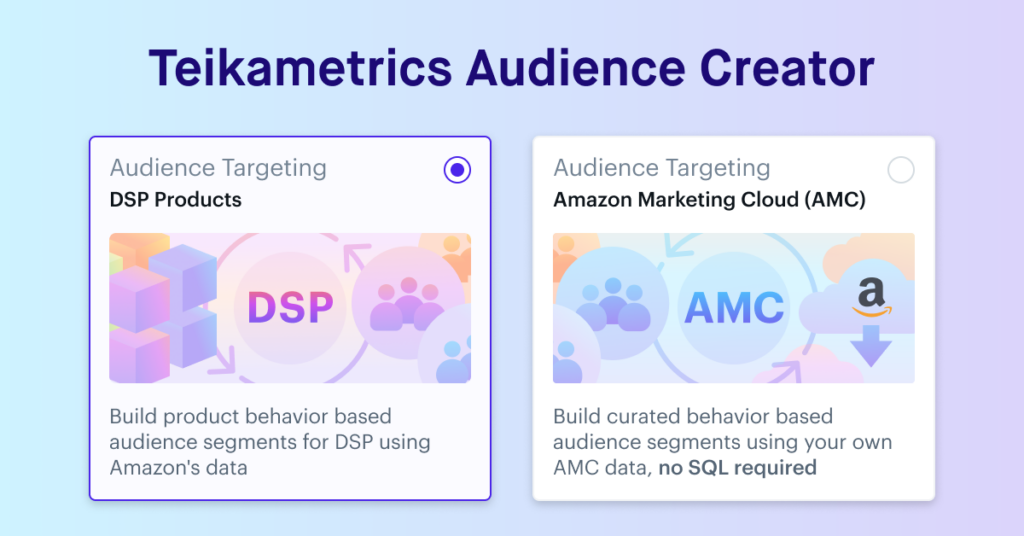Amazon is a powerhouse. Turn on the news each morning and the company is seemingly a topic of conversation no less than twice a week, especially concerning their massive growth. As recently as April, CEO Jeff Bezos was announced as the second richest billionaire in the world after acquiring Middle Eastern e-commerce site, Souq. While you’re wrapped up in the day-to-day of running a much smaller e-commerce business, Amazon is focused on the big picture: scaling their own business model while remaining one step ahead of their competition. Are you doing the same?
Amazon growth and expansion
Amazon is scaling at an exponential pace year after year. This much is obvious. Incredibly, Amazon is currently estimated to be worth more than the top 10 traditional brick and mortar retailers combined. If your own e-commerce business is run by selling on the platform, Amazon’s huge success most likely seems very appealing. On one hand, it’s an incredibly exciting time to be an Amazon retailer especially if you’re leveraging the Fulfillment by Amazon program; having access to sticky consumers with Prime memberships who are loyal to shopping on Amazon is ideal. In fact, although Amazon rarely discloses business performance details, analysts have calculated that as of February 2017, there are currently over 66 million Amazon Prime members. This means unlimited potential for your growth to skyrocket.
But as we all know, Amazon itself is a monster that continues to grow more and more arms, and it seems impossible to prevent the beast from getting its hands in every industry imaginable. Even Walmart, a retail monster of its own accord, is struggling to maintain pace with Amazon in today’s digital age. In an effort to keep up, Walmart recently eliminated the fee associated with two-day shipping to try and gain a competitive edge. Firing back where it hurts, Amazon started testing a new Prime service for grocery pick-up in 15 minutes, a direct challenge to Walmart’s infamous grocery service. Not just that, but yesterday, I personally ordered something using Amazon’s new “Prime Now” service and received my package within 2 hours of placing my order. In today’s age of instant gratification, competing with that is next to impossible.
It’s not just large corporations that struggle when facing Amazon’s many arms, though. In fact, your own Amazon business has almost certainly felt the impact of Amazon’s far-reaching grasp. A common situation we see is when sellers invest heavily in a product that has sold quickly and profitably in the past. Out of nowhere, with the financial resources of a multi-billion dollar corporation, Amazon starts selling the same product on the same listing, undercutting seller price by two-fold. Smaller retailers simply can’t compete while also maintaining sustainable margins and are forced to cut their losses on the item. And if you think you’re safe, perhaps in a category with limited competition, think again. Amazon is always looking for new categories to invest their endless resources.
Increased marketplace saturation
Beyond just Amazon as a competitor, sellers are also struggling to handle increased competition, especially from overseas sellers from countries like China. Gaining entry to the marketplace has never been easier, and Amazon has become increasingly more and more saturated with retailers. Amazon began fostering Chinese growth in 2015, and now there are an estimated 200,000 merchants from China selling on the USA platform. More and more sophisticated, international sellers are reaping the benefits of selling direct to consumer, effectively eliminating the third-party “middle man” entirely, giving US merchants a run for their money. The playing field has been leveled.
Brands are also feeling the heat from increased competition in the marketplace from counterfeit sellers and hijackers, 60% of which come from China. Amazon has taken steps in the right direction to rectify this problem, highlighted by the highly publicized lawsuit filed against counterfeit sellers for the first time in 2016. Currently, even though Amazon has a “report and removal” option for these scammers, the process to do so is time-consuming and convoluted. Furthermore, even if the infringing items are removed and account suspended, the rate at which international sellers continue to enter the marketplace inevitably means more counterfeit sellers affecting the sales of established brands. The good news? The process should evolve this spring. Amazon has heavily invested in a program to remove counterfeit items, attempting to assure brand owners that selling on their platform is still worthwhile.

6 steps to ensure you remain one step ahead
So what can you realistically do to warrant you don’t fall behind? Although you can’t stop Amazon from growing more and arms, you can make changes in your own business practices to guarantee you stay one step ahead of your competition. With increased opportunity comes increased responsibility, and to succeed you must be laser focused on every detail of your business.
Here are six steps to follow so you can take on the challenge of selling on Amazon’s platform, not only against an increased number of competitors but also against the monster itself.
1.) Be as objective as possible when putting the framework of your business into place.
The backbone of your business should be driven by data rather than by emotional attachment. Although it is ideal to be passionate about your industry and products, do not become jaded by this enthusiasm. Think of your products as commodities that could be traded on the stock market. Even if you believe an item should be selling profitably, if your hypothesis isn’t supported by impartial data, don’t invest your hard-earned capital. At the end of the day, that product is simply cash sitting on a shelf in a warehouse, tying up capital, eating away into your profit and waiting to incur long-term storage fees. Avoid the hoarder mentality and get rid of these items ASAP. Sometimes it’s necessary to be cold-hearted
2.) Audit your suppliers.
Whether or a brand or reseller, creating and maintaining both quality AND quantity relationships with suppliers and manufacturers is key, especially when both parties are looking for a long-term, lucrative business relationships. Negotiating payment terms and return options with your suppliers is key to improve your cash flow. Use factors like the length of your relationship, total sales volume and order value as leverage to lower your cost of capital, ultimately decreasing overall Amazon selling costs in the process. Sellers who establish brand-exclusive relationships with suppliers have an edge – by limiting competition on your listings, the potential for revenue growth and surging profit is tangible. The best sellers establish and maintain these relationships with multiple suppliers to avoid a catastrophic fallout from placing all of their eggs in one supplier’s basket.
3.) Know your margins across all products and suppliers, and avoid focusing on top-line revenue.
Revenue is only a piece of the puzzle, and focusing on total sales won’t show you exactly what you are taking home at the end of the day; it certainly won’t tell you how much money you are actually giving to Amazon. Unless you tracking every single fee, warehouse cost, shipping cost, ad spend, electricity bill, returned and lost item, there is no way to know if you’re winning or losing because you do not have true visibility into your business. Need help with the unit economics? Check out our Profitability eBook to ensure your perceived success on Amazon is a reality.
4.) Due to increased competition, expect to invest more heavily in areas that will set your business apart, like branding, advertising, and after-sales service.
If you are a reseller, consider selling private label too. Although a risky initial investment, consider the benefit of tailoring to a niche consumer base. Typically, product margins are higher and there is no direct listing competition. Furthermore, if you aren’t currently using Amazon Sponsored Products Advertisements, you’re already behind the competition who has the extra real estate on Amazon. Be as product agnostic as possible and advertise your entire catalog rather than subjectively choosing products you believe will perform well. There is no risk for driving customers to competitor listings as products are only eligible for advertising while holding the Buy Box. Most importantly, sponsored products allow your items to show up in search and on competitor listings, something not possible to do organically. Each sale made with sponsored products improves your conversion rate, adds to your total sales volume, and improves your sales rank; a win-win-win.
5.) If the only channel you sell on is Amazon USA, expand your horizons.
To help maintain and grow your margin and associated profit, you must diversify your revenue streams by selling through multiple channels. Consider the benefits of also selling on Walmart, Jet.com, or eBay. An under-utilized area of expansion is Amazon’s European and Canadian marketplaces. You should consider researching the pros and cons of selling on abroad before the competition also decides to focus their time and energy on this under-utilized FBA seller base. Most importantly, to succeed over the next few years, you must be able to track customers across a growing number of platforms and devices. Multi-channel and Mobile are the future. Unless you can effectively measure when each channel is the most effective at driving sales you are not optimized completely. The only way to undertake this inconceivably difficult task is to rely on big data to make tweaks and improvements to your e-commerce business.
6.) Weigh the opportunity cost of selling your product on Amazon as compared to other channels.
You only have a finite amount of time, expertise, and capital. It is impossible to take advantage of every single opportunity that comes your way as a seller. By making one choice, you inevitably give up on any others. This is why we like to refer to opportunity cost as the value of the road not taken. When choosing whether to sell on Amazon or another platform, you should be weighing the cost for options like customer base, the volume of customers in FBA, marketplace saturation, product retail price, product margin, and associated selling fees.
Takeaway: Tomorrow’s success is NOT a guarantee.
The most important take away from this information? The world of online retail is constantly shifting, and to reap any success as a seller on the open Amazon platform, you must adapt to a constantly changing environment. We know that remaining one step ahead of your competition is an even more daunting task. Don’t become complacent with your e-commerce business if everything is running smoothly today. Stay ahead of the game by always working to improve your current processes, using a data-driven approach and remaining as objective as possible.
Have questions, comments, or other strategies you implement to remain one step ahead of your competition? Reach out. We’d love to hear from you!






